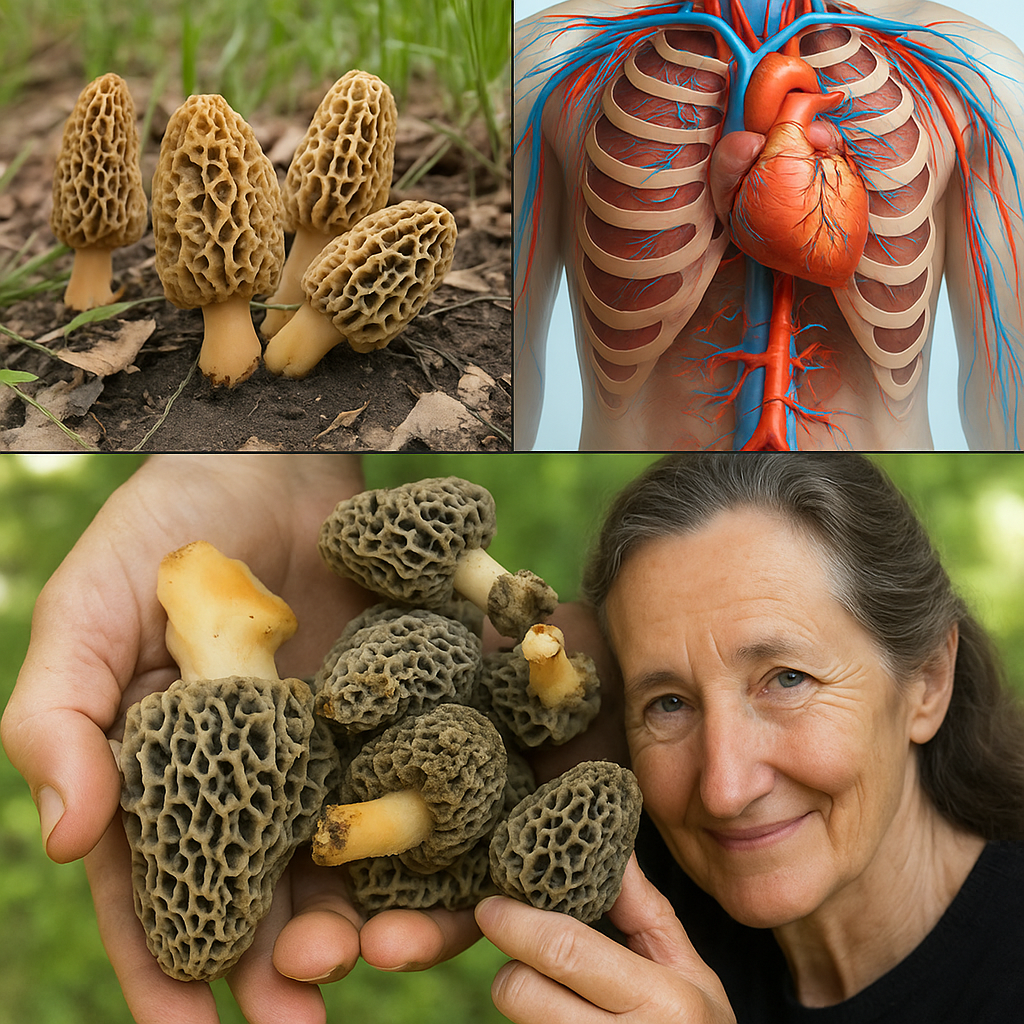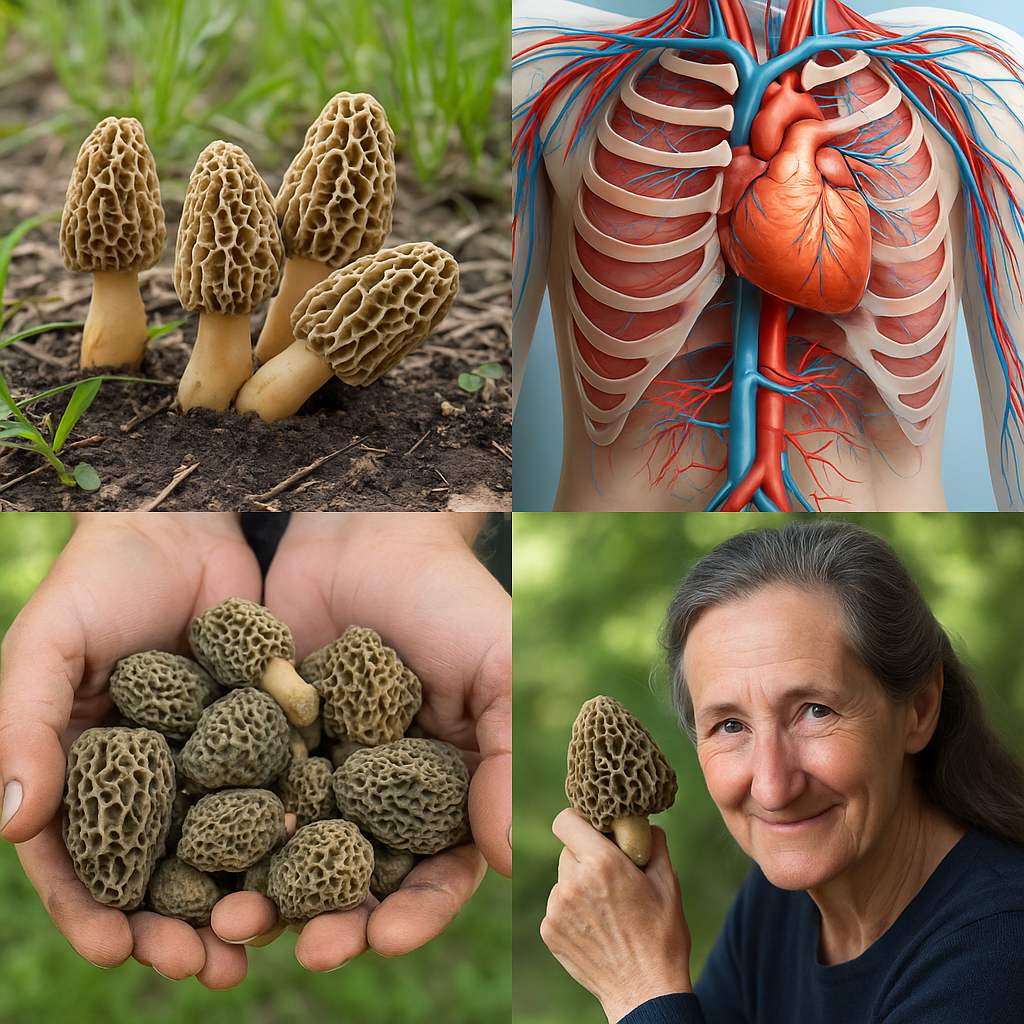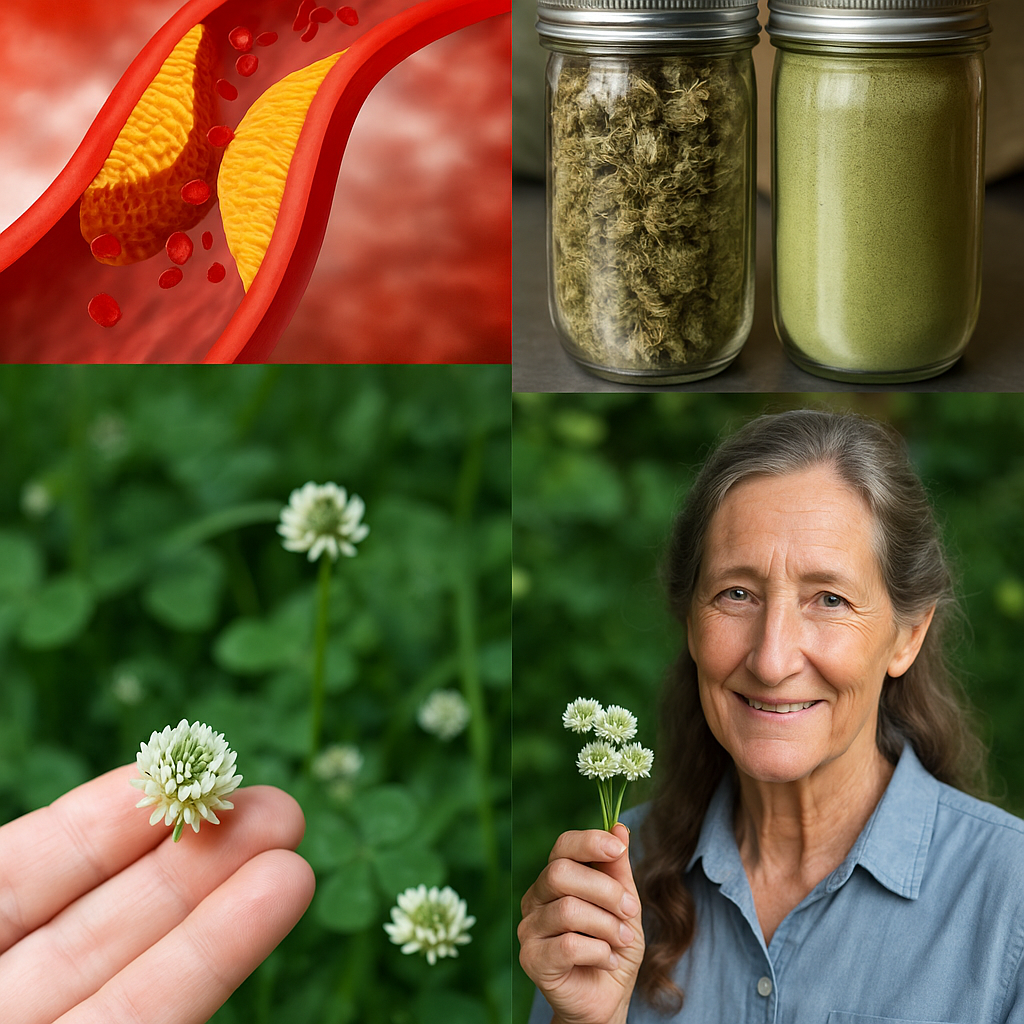There’s something undeniably magical about morel mushrooms. With their honeycomb-like caps and earthy aroma, these elusive forest gems are prized by chefs, foragers, and health seekers alike. But beyond their gourmet status lies a world of untapped nutritional value and natural wellness support.
Whether you’re an experienced mushroom hunter or just mushroom-curious, diving into the world of morels is both a culinary adventure and a wellness journey.
Let’s explore the fascinating types of morels, the impressive benefits they offer, and the safest ways to enjoy them.

🌳 Types of Morel Mushrooms You Should Know
🍄 1. Black Morels (Morchella elata, Morchella angusticeps)
– Deep ridged, dark caps with a smoky, robust flavor
– Commonly found in recently burned forests or near dead trees
– Best when sautéed with butter or added to savory dishes for a deep umami taste
🍄 2. Yellow Morels (Morchella esculenta)
– Light tan or golden color with a classic honeycomb structure
– Typically grow under elm, apple, or ash trees in deciduous forests
– Known for their delicate, nutty flavor—perfect in creamy sauces or risottos
🍄 3. Half-Free Morels (Morchella semilibera)
– The cap attaches halfway up the stem, giving a bell-like shape
– Found in moist woods or near riverbanks
– Milder in flavor but still edible when cooked properly
🌿 5 Impressive Health Benefits of Morel Mushrooms
🥗 1. Nutrient Powerhouse
Morels are rich in:
– Vitamin D: Supports immune defense and bone health
– Iron: Vital for red blood cell formation and energy production
– Antioxidants: Fight cellular damage and aging
🛡️ 2. Immune System Boost
Morels contain beta-glucans, natural compounds that activate immune cells and help defend against infections and inflammation.
🧠 3. Brain Health and Mental Clarity
Thanks to polyphenols and micronutrients, morels may support cognitive function and help protect against age-related decline.
🌱 4. Supports Digestive Health
High in dietary fiber, morels aid in digestion, nourish the gut microbiome, and help regulate bowel movements.

🎗️ 5. Potential Anti-Cancer Effects
Preliminary research suggests morels contain compounds that may help inhibit tumor growth and protect healthy cells—though more studies are needed.
⚠️ How to Use Morels Safely (And Deliciously)
🍽️ 1. Identify with Care
Don’t confuse true morels with their dangerous doppelgängers:
– True Morels: Hollow from stem to cap, symmetrical, with a ridged honeycomb texture
– False Morels (Gyromitra spp.): Dense, lobed, and can contain toxic compounds that are fatal when consumed
🔥 2. Always Cook Before Eating
Raw morels contain hydrazine toxins that can cause stomach upset. To enjoy safely:
– Rinse thoroughly to remove dirt and insects
– Sauté in olive oil or butter until golden and fragrant
– Add to omelets, pastas, meats, or cream sauces for a gourmet touch
📦 3. Store for Long-Term Enjoyment
– Fresh: Keep in a paper bag in the refrigerator (use within 1 week)
– Dried: Lasts months to years—just rehydrate before use
– Frozen: Blanch briefly and freeze in airtight bags for future meals
🧺 Tips for Foraging Beginners
– Always forage with an experienced guide
– Avoid mushrooms growing in contaminated areas (e.g., roadsides, industrial zones)
– Use a mesh bag when collecting to help spread spores and support mushroom regrowth
– Keep a mushroom field guide handy for on-the-spot identification
🌟 Final Thought: A Wild Treat With Gourmet Benefits
Morel mushrooms offer more than just rich flavor—they bring nutrition, wellness, and a sense of connection to nature. Their rarity makes them special, but their versatility and health potential make them timeless.
Whether you’re adding them to your dinner plate or exploring their role in holistic wellness, morels are truly one of nature’s most enchanting gifts.
🍽️✨ So the next time you find morels—whether in the wild or your local farmer’s market—remember: You’re not just cooking. You’re nourishing your body and honoring the magic of the forest.

